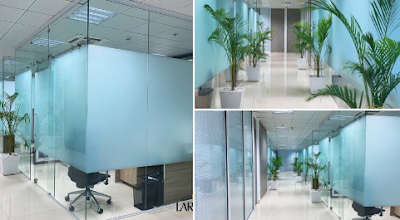A puja room ensures that the house is filled with positive energy. It's the corner of the house where we feel connected to our spiritual characters. Whether you are erecting a new home or moving into a rental apartment, consider setting up a home sanctum, big or small, to invite positive climate. In India, ecology is given great significance. It's an ancient wisdom of armature that provides guidelines for balancing energy when erecting or redesigning a home. According to Vastu, North- East direction is the stylish direction for house tabernacle. Other suitable directions are East and North. Avoid erecting tabernacles in any other direction. Everyone wants to produce a awful and serene place for the deity to live in their home. People these days prefer to have a pooja room that matches the home scenery. So, if you want to make a tabernacle for your home, then's a simple companion.
Design of platform of puja house
Do not place the idol on the floor while keeping it in the puja room. An deck or platform is a must feature in a home temple. Make a pedestal made of marble or wood to house the deities. You can embellish the space with oil painting oil lights or lights on either side of the idol. Designing a small wall- mounted puja house is an excellent option for small homes. A house temple design with aggregate top or Indian style arc will produce the right atmosphere for the place of idolization.
Home Temple Door Designs
Wood enhances the look of any space. Rustic doors are extensively preferred for home tabernacles and are considered eco-friendly. Incorporate emotional door busts to present a rich look and produce a perfect air for the tabernacle in your home. Jali design doors are relatively popular and bring an aesthetic appeal.
So Ishan corner is very significant in respect to the placement of the house mandir or puja place. Incase of if it is not possible to keep mandir in the Ishan corner then we can place in purba or East or towards uttar or North side. Numerous crucial factors need to be considered like Vaastu direction, size of the space, position of the mandir, style and material.
Lack of space is a big problem in most cities in modern times. Therefore, finding an apartment with a separate dedicated space for a pooja room can be difficult. So does this mean you should skip this very important part of your home altogether? It's not necessary. You can place your pooja 'room' on top of your wooden cabinet. Or you can customize a multi-tiered pooja unit, complete with seamless drawers to store pooja essentials. The "jaali" theme background helps to beautify your intimate prayer space.
Modern-day pooja room tiles layout
you can never go wrong with tiles. Whether or not you select a formidable abstract sample or a vaastu-compliant white color, tiles are one of the most secure materials for building pooja rooms. Accentuate tiles with cove lighting. It's going to flawlessly supplement your city way of life. Additionally, blend in a hint of lifestyle with the aid of dangling brass bells or diyas from the ceiling and entire the appearance.

Make the pooja room an extension of your drawing room. A small corner in your residing room with an difficult wooden partition is sufficient to provide this space a prominent look. Yellow, brown and green are perfect colorings on your pooja room, as consistent with vaastu shastra. You could custom layout steel cutwork in golden yellow or cover the partitions with woodland green tiles; both appearance lovely. It adds the proper quantity of glitz to the space and offers some other dimension on your pooja room.
South Indian Mandir
design
Intricate bold wood carvings and brass objects are some generally used elements often visible in south Indian temples. Even a separate room with a heavy wooden front frame can set an outstanding tone for what lies beyond. The distance initiatives a decluttered look with idols made in brass and marble, and images hung well on the wall. Moreover, we are in absolute awe of this majestic ground-to-ceiling wood mandir frameset made with ‘jaali’ detail. The divine vibe is finished with cove lights in the back of the mandir body.
Modern interior
design for pooja room wall Unit designs
In case you live in present day-day city homes with constrained space, wall-hanged pooja unit is probably your solution. Optimize the empty wall area for your eating room with utmost finesse with elaborate patterned wooden panels on two aspects. Or you can get a custom-made closed pooja wall unit that doubles as a bookshelf and chest of drawers.
Present day pooja room designs in marble

marble has been the most famous material to build pooja gadgets for loads of years. As a fabric, marble oozes calming serenity and elegance. We are able to name it a traditional preference. However it could be highly-priced. So, if you have the method, construct a entire pooja room with marble. Its splendor may be improved with elaborate carvings, pillars, motifs. But if you are looking for a fee-effective choice, integrate marble reduce-out with timber ply. Whole a marble pooja room with a assertion mild fixture. Marble also allows in developing an phantasm of larger area, for this reason ideal for small modern-day pooja room designs.

If you are very much excited and looking for a modern design but vastu oriented pooja area design then you can contact "Anmol Interior".(https://aidkol.blogspot.com/)

.jpg)









.png)































%20damp.png)






